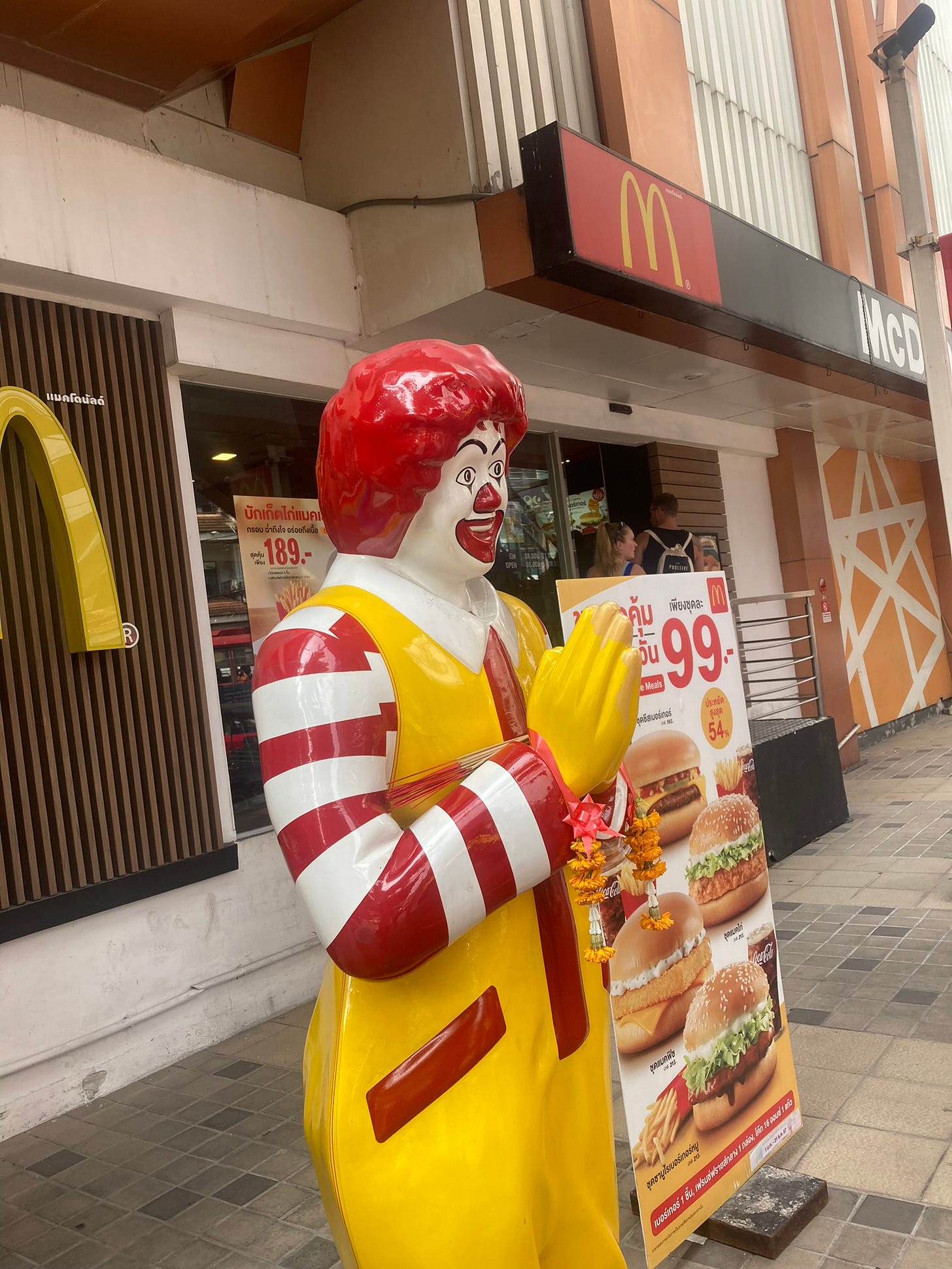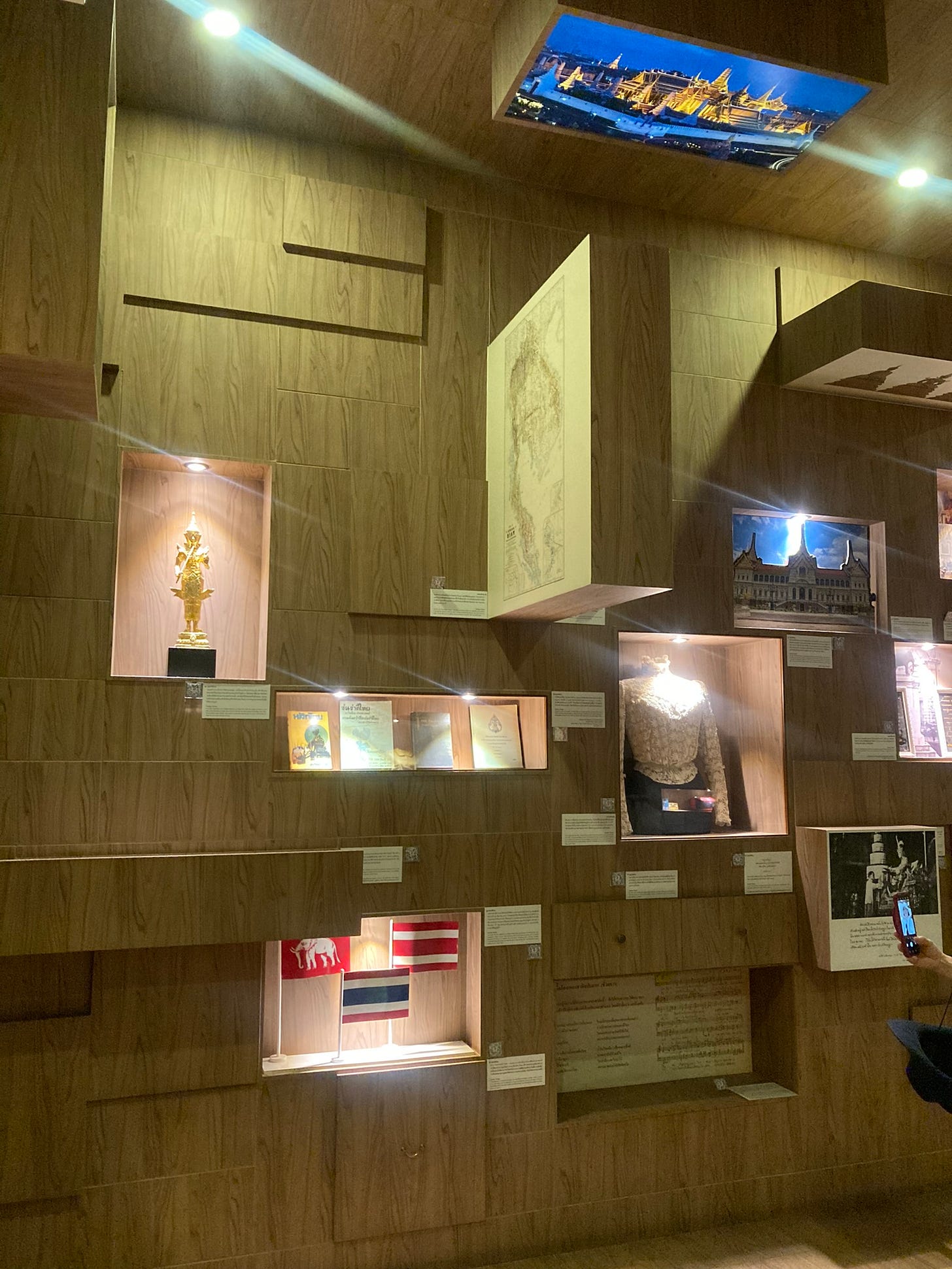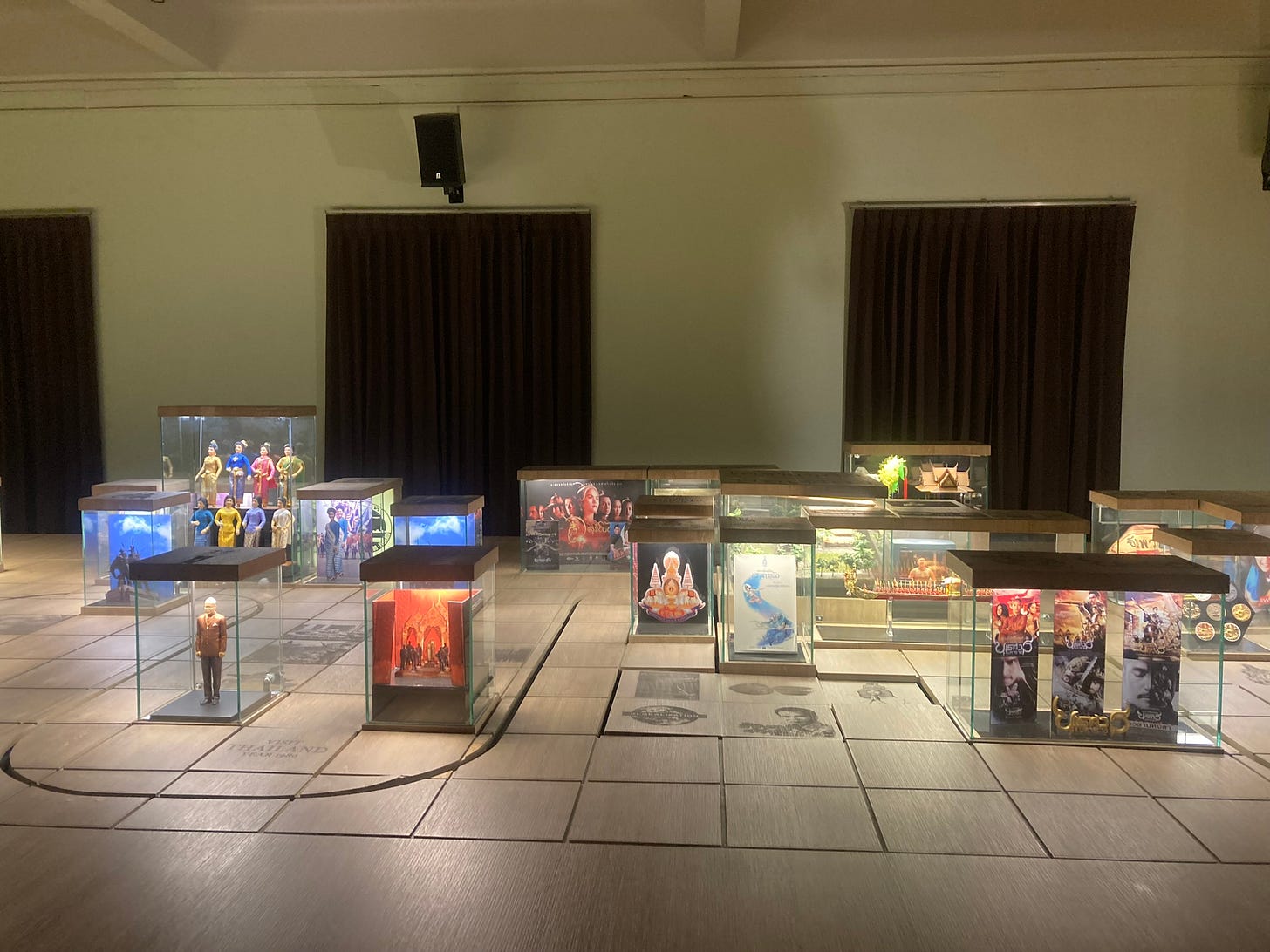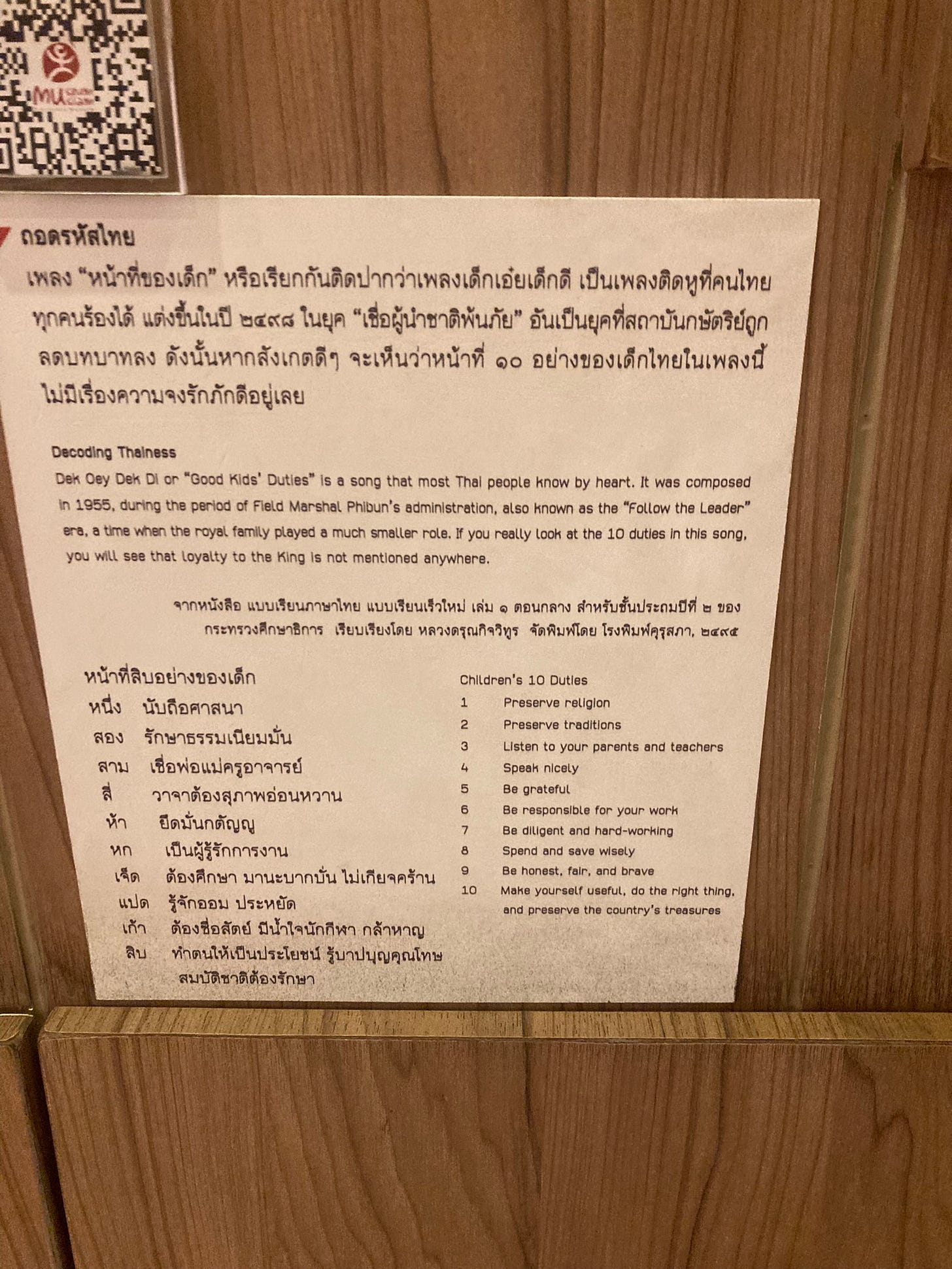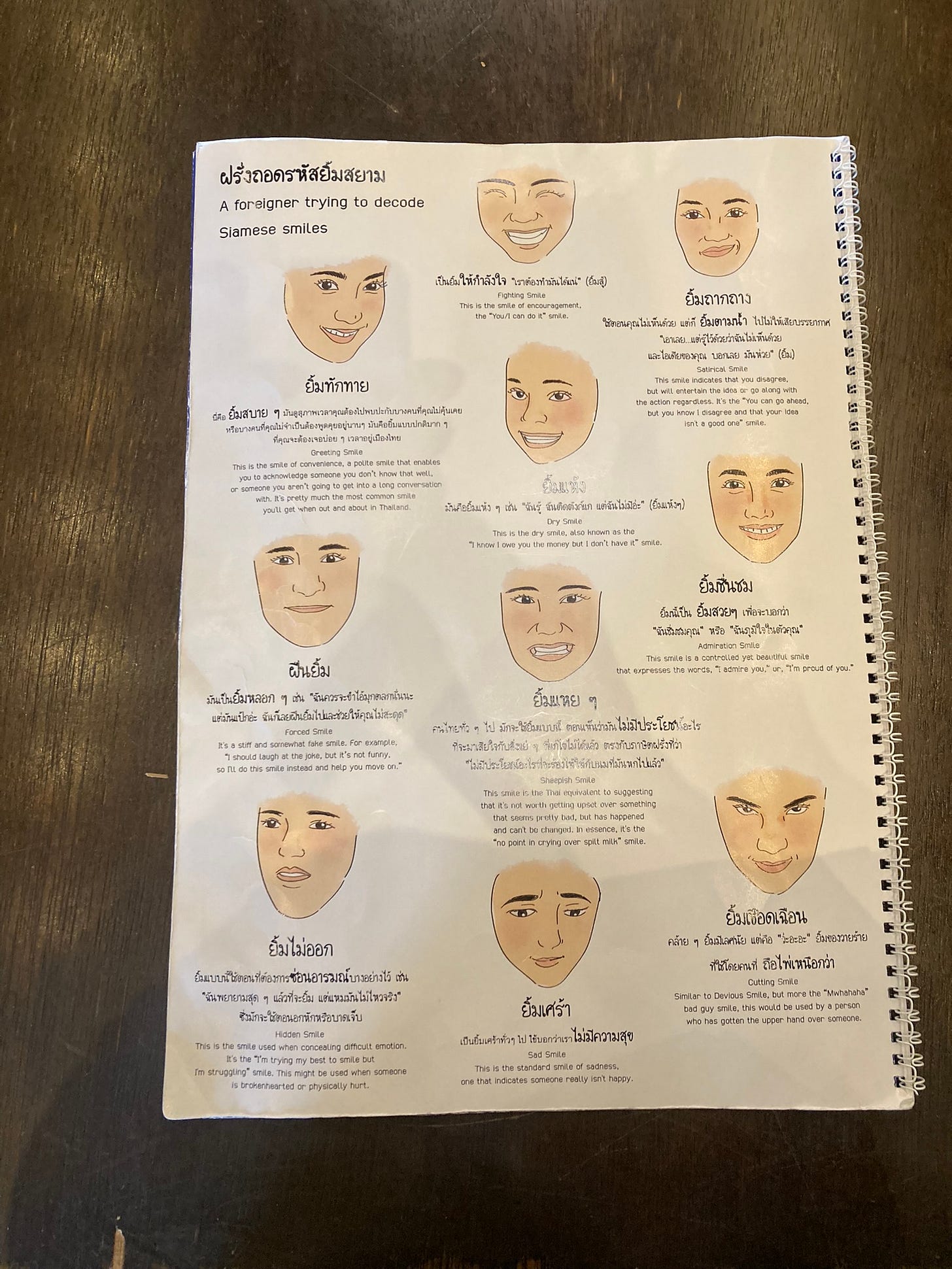Thainess
I gave Jack a day off and headed for the interactive Museum Siam. This museum was extremely organized and thorough and the displays were top notch. It would be an organization model for any museum. The theme was Thainess and its aim was to demonstrate what being a Thai person means.
On the way to the museum, I passed this Ronald McDonald statue in the Thai greeting referred to as wai which consists of a slight bow with the the palms pressed together in a prayer-like fashion. It has its origin in the Indian Anjali Mudra like the Indian namaste. This gesture is so respectful. I wish this was the custom in America. I think it makes you stop and show kindness which we could all use a big dose of these days.
The opening rooms were full of cabinets, organized by years, that had actual examples of musical instruments, books, jewelry, amulets, etc. There are multiple drawers to open and see more examples.
Each of the items have both the Thai and English information. One of the displays explained decoding Thainess. It stated that the history textbooks say that forest goods used to be the main export products of Siam - elephant tusks, deer hides, sappen wood, sandalwood, animal horns and pepper. They reflected the fertility of the country.
The informational “movie” was actually a large table with pop-ups that moved up and down along with a narrative. Not a deep dive into history, but good overview.
My dive into Thai history on the post is not a deep dive, but more of a kiddie pool dive. :) Thailand can trace its origin to the Tai people who migrated in 1000. The first independent Tai kingdom was the Sukhothai Kingdom which promoted Buddhism. When I was growing up, Thailand was called Siam, though it was officially changed to Thailand in 1939.
Model of the Royal Throne.
Thailand was governed originally by an absolute monarchy. All the kings, even today, carry the name Rama. In 1932 after a coup, Thailand became a Constitutional Monarchy. Thailand was one of the few Southeast Asian countries that was not colonized. This was mainly due to the French and the British deciding to maintain it as a neutral territory to avoid conflicts. Although it is considered a constitutional monarchy, Thailand was ruled by a series of military governments interspersed with brief periods of democracy from that time until the 1992 elections. Since the 1992 elections, Thailand has been a functioning democracy with constitutional changes of government.
The three pillars of Thai are nation, religion, and king. These pillars have been taught in schools for generations, and are still the fundamentals of schooling.
This was a song that was taught beginning in the 1950s. Thai people grew up with the song that encouraged good behaviors.
I thought this was a fantastic interactive display. There are plates all along the wall. You can take a plate and put it on the interactive table. The ingredients of the Thai food you select are then displayed on the table. It also shows picture of the ingredients. Each wall had a different language that could be chosen. The display emphasized the importance of food in Thainess.
I liked the information The Taste of Thai:
“They say to get to know a culture, go to the kitchen, listen to the beat of the pestle and mortar knocking, look at the vivid colors of the ingredients, and inhale the detectable scent of various kinds of food. Each home has its own secret recipe, which is hard to copy. Food in the Thai kitchen has various origins - Mon, Chinese, Western, Indian, Lao and more. But once the foreign dishes have made their way to a Thai kitchen, the flavors are localized, and become known as “Thai Food” as the world knows it.”
While Buddhism is the most dominant religion, the musuem had many examples of other religions including animism (giving living souls to inanimate objects), Hinduism, and others. The mixture of religions is a part of Thainess, and often people pray to many things. This is a fortune cup. You shake the sticks until one falls out. Then you match the number on the stick with the fortune.
Couldn’t agree more with the wisdom of my fortune.
These were fashion representing Thainess throughout the years.
One room was devoted to games and activities that could be shared with children. This was a display for foreigners to figure out the various Thai smiles. Keep smiling!





